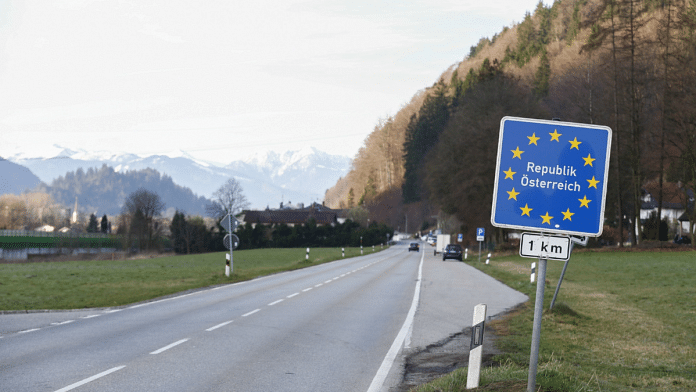We are seeing glimmers of light at the end of the tunnel that is the Covid-19 crisis. China, where the pandemic first struck, had its first day with no new deaths to report. Europe’s worst hit countries, Italy and Spain, are recording a slowing of their respective death tolls. And governments are now talking openly about lifting draconian lockdowns that have restricted movement for half of the world’s population, torpedoed economic activity and imposed a global recession. This is a big moment.
The tunnel is a long one, though. The coronavirus outbreak hasn’t spread uniformly, and, in Europe, country-by-country lockdowns have been applied in haphazard ways. For now, only a handful of states are outlining plans to lift restrictions within days.
The most confident public signals aren’t coming from countries with the most heavy-handed measures, such as Italy or Spain, or those taking a more lax stance, like Sweden (which is belatedly getting tougher). They’re coming from Austria and Denmark, which acted early relative to their coronavirus outbreaks and saw their infection rates come under control. Data compiled by Oxford University’s Blavatnik School of Government shows these two countries introduced lockdowns when they had fewer than 1,000 cases and almost no deaths. When France and Spain began theirs, their case count was closer to 10,000 and their death tolls in the hundreds.
If there’s a lesson to heed from the likes of Austria and Denmark — which were themselves following in China, Italy and Israel’s footsteps — it’s twofold. First, as Bank of America’s Ethan Harris put it last week, the least expensive shutdown for one’s economy is a “quick, air-tight” one, rather than one that’s slow and indecisive. And second, ending such a shutdown should be done very, very carefully.
It’s already clear that 9 million Austrians will not suddenly swarm the streets of Vienna or the mountains of Tyrol to toast and sing their liberation, Sound-of-Music style. Chancellor Sebastian Kurz has laid out his plan for a “step-by-step” re-opening on April 14, which is as cautious as it sounds. Everyone will have to wear a mask on public transport, in supermarkets, and in the stores that are due to re-open. The resuscitation of the economy will happen in two-week phases, starting with small stores and parks, then bigger stores and malls, then restaurants and bars. Schools are going to remain closed for the time being. It’s a broadly similar story in Denmark.
This speaks to the underlying fear that stalks life after lockdown: A potential flare-up in infections and deaths as the virus becomes free to mingle once again, overloading critical-care facilities. It would be a nightmare if a country opened the flood-gates only to shut them again a few days or weeks later. How long would Europeans’ support for being confined to their homes last if lockdowns ran through spring and summer, making partial unemployment potentially something more permanent? Enforcing a shutdown would be doubly hard the second time around. A phased recovery is calculated to avoid the possibility of that happening.
Yet it also suggests that hopes for a sharp bounce-back in the economy — the longed-for “V-shaped” recovery — are looking distant. More movement, more spending and more activity are clearly good for private consumption in Austria, which according to Raiffeisen Bank International analyst Gunter Deuber accounts for just over 50% of GDP. But how much pent-up demand will be unleashed in a country of masked consumers, respecting social-distancing measures and grappling with the highest unemployment rate since World War II?
Google location data for Austria points to a drop-off in shopping trips and recreation of around 87% from the pre-virus baseline, and 64% fewer trips to the grocery store and pharmacy. That’s not all going to be clawed back immediately. Research by RBC Capital Markets found that in China, where restrictions first began to be eased last month, there had been no return to “normalcy” on a countrywide basis.
And if no man is an island, so it goes for Austria, a small land-locked European Union country deeply integrated into the bloc’s single market. Some 70% of Austria’s foreign trade is with other EU members. There won’t be much victory in leap-frogging one’s closest partners given the trade disruptions that will remain; Austria’s border closures and travel bans will probably be the last measures lifted. That suggests energy still needs to be expended in backing more cooperation and resource pooling to fend off the coronavirus at the European level.
So while the overall direction is positive, it could be months before post-lockdown life looks anything like normality for Austria or its neighbors. A vaccine is likely a year away, and Europe hasn’t ramped up its testing capacity enough to start sending people back to work without heavy-handed safety measures.
Until then, though, Austrians can at least start planning their next trip to the park — to model the latest mask fashions. -Bloomberg
Also read: China to lift restrictions in Wuhan after 2-month lockdown due to coronavirus






